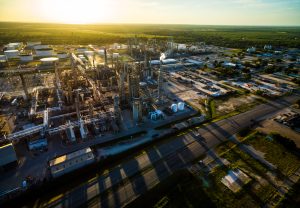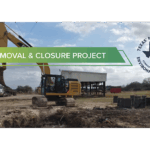
Phase 2 Environmental Site Assessments (ESAs) play a crucial role in determining the environmental condition of properties in New Braunfels. These assessments are designed to identify potential contamination issues that could pose risks to human health and the environment. By thoroughly examining the site and conducting extensive laboratory analysis, Phase 2 assessments provide a comprehensive understanding of the site’s environmental quality. This article will explore the key components of Phase 2 assessments, the importance of conducting them, the process involved, regulatory frameworks, potential challenges, and the role of environmental consultants in New Braunfels.
Understanding Phase 2 Environmental Site Assessments
Phase 2 Environmental Site Assessments are a follow-up to Phase 1 assessments, which primarily focus on identifying potential areas of concern based on historical records, site inspections, and interviews. Phase 2 assessments, however, involve physical sampling and laboratory analysis to confirm the presence or absence of contaminants. These assessments are essential in providing site-specific data and evaluating the potential risks associated with development or property acquisition.
Key Components of Phase 2 Assessments
Phase 2 assessments typically involve several key components, including:
- Site Characterization: This involves conducting a detailed inspection of the site, which includes observing topography, soil conditions, infrastructure, and nearby water sources. It also includes identifying potential sources of contamination, such as underground storage tanks or industrial activities.
- Sampling Plan: A comprehensive sampling plan is developed to target specific areas of concern and determine the appropriate type and number of samples to be collected. This plan may include soil, groundwater, surface water, and vapor sampling, depending on the suspected contaminants and site conditions.
- Sample Collection: Samples are collected using appropriate methods and equipment to ensure their integrity and representativeness. Proper documentation is maintained throughout the sampling process to track the samples’ chain of custody and ensure reliable results.
- Laboratory Analysis: Collected samples are sent to accredited laboratories for analysis. The laboratory tests vary depending on the suspected contaminants but may include chemical analysis, microbial testing, or geotechnical analysis. The results are then interpreted to determine if contamination is present and assess the risk associated with it.
- Data Interpretation: Once the laboratory results are obtained, environmental professionals interpret the data and compare it against relevant regulatory guidelines or standards. This step helps identify potential issues that could pose risks to human health and the environment.
The Importance of Phase 2 Assessments
Phase 2 Environmental Site Assessments are crucial for several reasons. Firstly, they provide an accurate understanding of the environmental condition of a property, allowing stakeholders to make informed decisions regarding its use or development. They also help identify potential liabilities and financial risks associated with contamination, ensuring that appropriate mitigation measures can be taken. Moreover, Phase 2 assessments are essential for compliance with environmental regulations and can contribute to maintaining a healthy and sustainable environment in New Braunfels.
The Process of Phase 2 Environmental Site Assessments in New Braunfels
The process of conducting Phase 2 assessments involves various steps and stages. Let’s explore these in more detail:
Initial Site Inspection and Sampling
The initial site inspection involves visiting the property and conducting a thorough visual examination. Environmental professionals look for signs of potential contamination, such as staining, discoloration, or chemical odors. This inspection also helps in identifying potential sampling locations. Once the areas of concern are identified, professionals collect samples using appropriate sampling techniques to ensure their representativeness.
Laboratory Analysis and Data Interpretation
The collected samples are then sent to accredited laboratories for analysis. The laboratory tests performed depend on the suspected contaminants and the project-specific objectives. The results are interpreted by environmental professionals who compare them against regulatory standards to identify any contamination and assess its potential risks. This step helps determine the most appropriate mitigation measures, if necessary.
Regulatory Framework for Environmental Site Assessments
Environmental site assessments in New Braunfels are subject to federal and state regulations aimed at protecting human health and the environment. These regulations ensure that developers and property owners comply with environmental standards and guidelines throughout the assessment process.
Federal and State Regulations
In the United States, the Comprehensive Environmental Response, Compensation, and Liability Act (CERCLA), also known as Superfund, sets the framework for addressing hazardous waste sites. At the state level, Texas has its own environmental regulations, including the Texas Risk Reduction Program (TRRP) and the Texas Commission on Environmental Quality (TCEQ) rules, which outline the requirements for conducting Phase 2 Environmental Site Assessments.
Compliance and Enforcement in New Braunfels
In New Braunfels, compliance with environmental regulations is essential to ensure the protection of the environment and public health. Regulatory agencies actively monitor businesses and development projects to ensure compliance and may enforce penalties for non-compliance. Engaging environmental consultants who are well-versed in these regulations can help companies navigate the complex compliance landscape and mitigate potential risks.
Potential Challenges in Phase 2 Environmental Site Assessments
Phase 2 Environmental Site Assessments can present several challenges that need to be addressed effectively. Let’s explore some of these challenges:
Dealing with Contaminated Sites
One of the primary challenges faced in Phase 2 assessments is dealing with contaminated sites. Depending on the extent and nature of the contamination, remediation measures may be required to mitigate the risks posed by the contaminants. These measures can range from soil and groundwater remediation to the implementation of engineering controls or institutional controls. Overcoming these challenges requires a systematic and well-executed strategy, backed by environmental professionals with expertise in site remediation.
Mitigation and Remediation Strategies
Implementing mitigation and remediation strategies can be complex and expensive. Environmental consultants play a critical role in assessing the contamination risks and identifying appropriate mitigation measures. They can provide guidance on implementing cost-effective and sustainable strategies to address contamination issues, while ensuring compliance with regulatory requirements.
The Role of Environmental Consultants in Phase 2 Assessments
Environmental consultants play a vital role in conducting Phase 2 Environmental Site Assessments and ensuring the success of the assessment process. Let’s explore their role in more detail:
Selecting the Right Environmental Consultant
Choosing the right environmental consultant is crucial for the successful execution of Phase 2 assessments. Environmental consultants should have expertise in site assessments, environmental regulations, and remediation strategies. They should also possess extensive knowledge of the local regulatory framework in New Braunfels. Selecting consultants with a proven track record in managing complex assessment projects can greatly enhance the outcomes and efficiency of the assessment process.
How Consultants Facilitate the Assessment Process
Environmental consultants facilitate the assessment process by providing technical expertise, project management skills, and regulatory compliance guidance. They assist in developing sampling plans, selecting appropriate laboratory tests, and interpreting the results. Consultants also play a key role in designing effective mitigation and remediation strategies, ensuring that contamination risks are managed efficiently and cost-effectively.
In conclusion, Phase 2 Environmental Site Assessments in New Braunfels are essential for evaluating potential contamination risks associated with properties. These assessments involve a thorough examination of the site, sampling, laboratory analysis, and data interpretation. They play a crucial role in compliance with federal and state regulations and in identifying potential liabilities. Despite the challenges that Phase 2 assessments may present, engaging the right environmental consultants can help navigate these challenges and ensure a successful assessment process. By conducting comprehensive Phase 2 assessments, stakeholders can make informed decisions and contribute to a healthy and sustainable environment in New Braunfels.
Ready to ensure your New Braunfels property is environmentally sound and compliant with all regulations? ESE Partners is here to guide you through the complexities of Phase 2 Environmental Site Assessments with our team of expert environmental engineers and scientists. We specialize in providing thorough assessments, innovative remediation strategies, and comprehensive compliance support tailored to your unique needs. Don’t let environmental challenges hinder your business progress. Request A Proposal today and partner with us to move your business forward responsibly while improving community quality of life.








